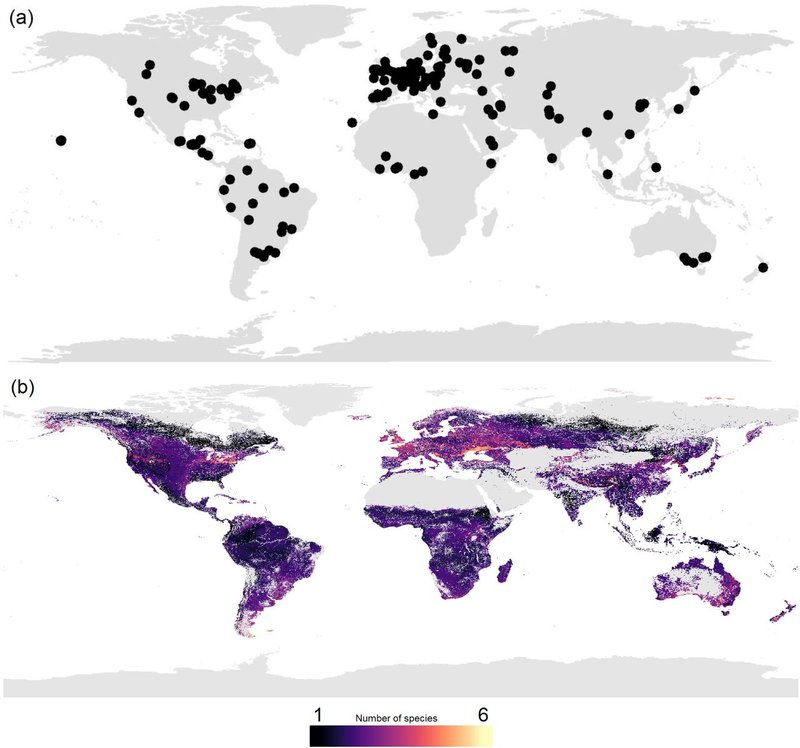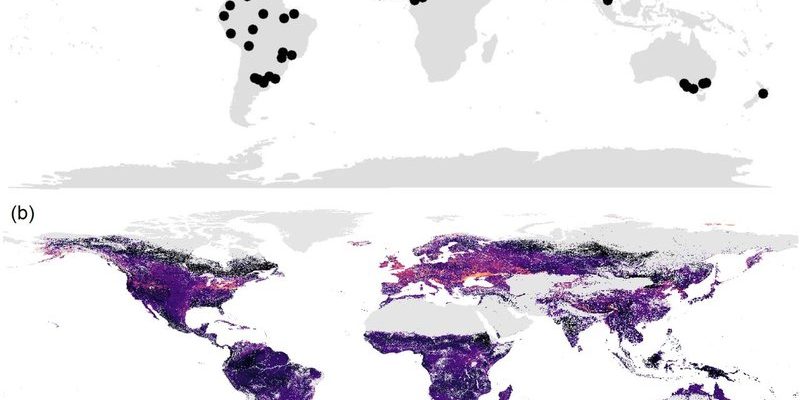
Now, if you’re curious about where you can find these intriguing little guys, you’re not alone! Just like knowing where to find your favorite coffee shop, understanding the distribution of velvet worms can enhance your appreciation for these remarkable animals. So grab your favorite mug, settle in, and let’s explore the distribution maps of velvet worms across different continents.
What Are Velvet Worms?
Velvet worms might seem like a mystery, but they’re surprisingly easy to understand. These soft-bodied creatures belong to an ancient group of animals that have been around for millions of years—long before dinosaurs roamed the Earth. They’re often found in tropical and temperate regions, lurking in leaf litter, under rocks, and in tree bark.
One key feature of velvet worms is their *slime glands*. Think of these as their secret weapon! When threatened, they can shoot a sticky substance at predators, which helps them escape. They also have a unique method of hunting—using their slime to trap prey like insects. Isn’t that wild?
You might be wondering what makes them so special. Velvet worms are part of the evolutionary bridge connecting arthropods (like spiders and insects) and annelids (like earthworms). This unique positioning provides scientists with insights into the evolution of these groups, making them a significant point of study in biology.
Distribution of Velvet Worms: An Overview
Now that we have a good grasp of what velvet worms are, let’s dive into where they call home across the globe. As you might guess, their distribution varies by continent, with each region featuring different species adapted to local environments.
Velvet worms prefer humid conditions, which is why they are mostly found in forests and tropical regions. They thrive in places with plenty of moisture, often hiding under leaves or in decaying vegetation. Understanding their distribution is crucial for conservation efforts, especially as their habitats face threats from climate change and deforestation.
So, how do we know where velvet worms live? Researchers use distribution maps to track sightings and gather data about their habitats and ranges. These maps highlight the areas where different species are found and help us understand their ecological needs better.
North America: A Limited Presence
In North America, velvet worms have a rather limited presence. Most species can be found in the southeastern United States, particularly in moist forests of the Appalachian region. The two primary species here are *Euperipatoides kanangrensis* and *Peripatoides*. Though not as common as in tropical regions, their presence offers a glimpse into the diverse ecosystems found in North America.
Interestingly, velvet worms are more common in Central America, where the humid jungles create an ideal environment for them. So, while you might not find them in every forest, keep an eye out in the right spots!
Conservation efforts are vital in this region to maintain habitats that support velvet worm populations. The ongoing loss of forests and increased urbanization can threaten these unique creatures.
South America: A Hotspot for Velvet Worms
South America is like a velvet worm paradise! Countries like Brazil, Ecuador, and Colombia are home to a stunning variety of species. In fact, some researchers estimate that over half of the known velvet worm species live in this continent.
The tropical rainforests provide the humidity and shelter that these creatures need to thrive. One well-known species here is *Amastycheus*, which lives in leaf litter and thrives in the dense canopies of the Amazon rainforest.
You might ask why South America has such a rich diversity of velvet worms. The combination of varied climates, rich ecosystems, and geological features creates numerous niches for different species to adapt and thrive. This biodiversity is essential for maintaining the overall health of the ecosystems where they reside.
Africa: The Unknown Realm
Moving on to Africa, the distribution of velvet worms becomes a bit more mysterious. While there have been sightings in countries like Cameroon and Madagascar, comprehensive studies are still lacking. The moist rainforests of Central Africa could potentially house numerous undiscovered species, but many areas remain under-researched.
Researchers are making strides to explore these regions more thoroughly. Every new finding contributes to our understanding of velvet worms and their ecological roles in these ecosystems. It’s exciting to think about what else may be hidden in the depths of Africa’s lush forests!
As deforestation and habitat loss continue in Africa, the urgency to study and protect these unique environments grows. The velvet worms living there are just a piece of a larger puzzle, and their protection is crucial for maintaining biodiversity.
Asia: A Varied Landscape
Asia presents a fascinating tapestry for velvet worms, with their distribution ranging from the humid rainforests of Southeast Asia to the cooler, temperate forests in parts of the continent. Countries like Malaysia and Indonesia provide ideal habitats for many species, while regions in China and Japan host others adapted to different climates.
In Southeast Asia, researchers have documented several species residing in tropical forests. The unique interplay of heat and humidity creates a thriving environment for these invertebrates to flourish.
However, as with other continents, habitat loss poses a threat. Urbanization and climate change are impacting these lush environments. Protecting velvet worms in Asia means preserving the broader ecosystems that support them—definitely a win-win situation!
Oceania: A Unique Ecosystem
In Oceania, velvet worms can be found mainly in New Zealand and Australia. The lush forests and temperate climates create a welcoming environment for a variety of species. For example, *Peripatus novaezealandiae* is a common velvet worm in New Zealand, often found in damp leaf litter.
What’s also fascinating is how isolation has led to unique evolutionary paths for velvet worms in this region. For instance, some species in New Zealand exhibit traits not seen in their global counterparts. This highlights the role of environmental factors in shaping their development.
Preserving these habitats is essential for the continuation of the diverse velvet worm populations in Oceania. As we’ve seen throughout, habitat protection is critical for the survival of these unsuspecting yet remarkable creatures.
In conclusion, exploring the distribution maps of velvet worms by continent opens up a world of understanding about their habitats and conservation needs. From North America to South America, Africa to Asia, and Oceania, each region presents unique challenges and opportunities for these fascinating creatures.
By studying their distribution, researchers can gather crucial insights into their ecological roles and adapt conservation strategies to protect them. Honestly, the more we understand about velvet worms, the better equipped we are to preserve the delicate balance of ecosystems they inhabit.
So, whether you’re a budding biologist or just someone who appreciates the wonders of nature, knowing about these lesser-known creatures can enrich our understanding of the planet’s biodiversity. Let’s keep the conversation going about the amazing velvet worms and their places in our world’s diverse ecosystems!

